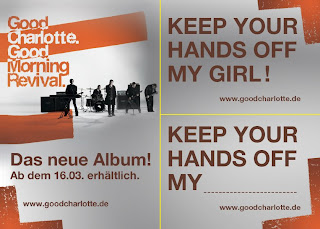 Brown??? I don't get it. But here is an article from I.D. that discusses the rational behind it...
Brown??? I don't get it. But here is an article from I.D. that discusses the rational behind it...
Microsoft's Zune heralds a return to chocolatey hues.by Jesse Ashlock
From the March/April 2007 issue of I.D.
When microsoft revealed last fall that its new iPod challenger, the Zune, would come in brown, there was a chorus of snickers on the blogosphere ranging from playground jokes about poo to Gizmodo's snarky comparisons to "swamp water Jell-O." After the player's lackluster debut, tech analyst Rob Enderle blamed poor sales on the color (even though the device is also available in black and white), remarking snidely, "Microsoft came to the conclusion after market research that the new hot color is brown. No other hardware company has come to that conclusion."
But what if Microsoft was right? The computing giant doesn't exactly have a reputation for being a market leader in design, but maybe they were on to something with the whole brown thing. Maybe consumers have grown weary of a personal technology landscape in which the options are limited to white, black, and brushed steel. Maybe consumers are craving a color palette that feels a bit more... human.
At least that's what JDK Design, the Vermont-based firm that worked with Microsoft to develop the Zune's colors, logo, packaging, and other identity elements, was hoping. Knowing that Microsoft wasn't likely to out-iPod Apple with a first-generation device, JDK looked for a genuine point of differentiation. What didn't the iPod and its brethren do well? They concluded that the MP3 player market was missing the kind of emotional experience music consumers used to get from old-school analog equipment. "Like when you open a vinyl record and you smell it," explains JDK design director Malcolm Buick, who oversaw the project. "Or when you open an old portable turntable from the '60s, with the little vanity case made of leather. There was an amazing experience there, the touch of it, the smell of it, the stitching on it."
Taking cues from high-end audiophile gear, JDK first thought to design the player with a wood veneer, then considered leather or copper, which would take on a patina over time-anything to depart from what Buick calls the "preciousness" of white. Eventually, technical considerations mandated a molded plastic design similar to the Zune's competitors. But JDK sought to reproduce the analog emotional experience by using brown, a warmer tone virtually absent from personal technology products since the first Atari consoles a quarter century ago. A subtle overlay of acid green (called a "double shot") gives the device additional depth and dimensionality, distinguishing what is otherwise an attractive but relatively staid object.
It's a baby step, but could the Zune portend a sea change in the way our devices look? A similar aesthetic has already found its way into mobile phone design: Nokia's 2005 line of L'Amour fashion phones, with a warm palette inspired by natural materials like amber and metal, was a critical success. "Brown, bronze-these are great colors to humanize technical products," notes Silas Grant, Nokia's senior design director of fashion and premium. A rash of like-minded designers have sought to deemphasize tech's chilly austerity with nature-inspired accessories, from Miniot's luxe hardwood iPod cases to Peter Kinne's oak, maple, and brass hard-drive containers. "Maybe by this time next year we'll have wood-veneer USB key chains," Buick muses, and in fact, the product he imagines is already here: Last year, the Dutch firm Oooms introduced a USB device in the shape of a twig that, as designer Guido Ooms puts it, deliberately seeks to "intrude on the slick plastic world of computers."
After all, though nearly everyone agrees that the iPod is beautifully designed, it calls attention to itself as a piece of technology; when it inevitably gets scratched and dinged, it looks damaged. The Zune's ambition is to weather comfortably and disappear into your life, like a wallet or any other beloved everyday object. As Ooms explains, "We all believe by now that technology works, so I don't think we need to see it in the same way." In other words, maybe gadgets don't need to look so damn gadgety anymore-we'll find out how amazing they are by using them. If consumers come around to this way of thinking, brown just might be back for good.
(Photo: clockwise from top Brown is back: Microsoftís Zune, Guido Oomsís Twig USB device, Nokiaís 7370, and Amadanaís Conversion Calculator by Shuwa Tei)









